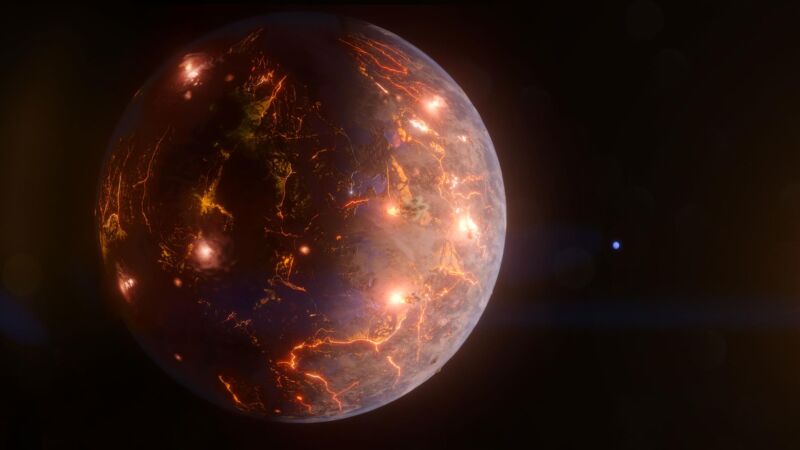[ad_1]

Newly Discovered Exoplanet with Active Geology and Potential for Liquid Water
For most of the exoplanets that have been discovered, scientists know very little about them. They may have some information about the star they orbit and perhaps a partial list of other planets in the same system. At a minimum, they usually know either the planet’s size or its weight. However, when this limited information is combined, it can infer a lot about the exoplanet. A prime example is a newly discovered exoplanet orbiting a small star about 90 light-years from Earth, which suggests it has active geology, including volcanoes, and the potential to support liquid water.
The Discovery of LP 791-18d
The exosolar system at the star LP 791-18 was first discovered by the Transiting Exoplanet Survey Satellite (TESS) when it detected two planets orbiting LP 791-18, one of the smallest and dimmest stars known to host planets. The first planet discovered, LP 791-18b, takes less than a day to complete an orbit and is about 20% larger than Earth, making it too hot to sustain liquid water. The second planet, LP 791-18c, is a sub-Neptune that is over double the size of Earth and has a five-day orbit.
The discovery of LP 791-18c led to some of the last observations conducted by the Spitzer Space Telescope before shutting down. The data captured by the Spitzer Space Telescope suggested the possibility of another planet orbiting between the two known planets. That led to a multi-year, multi-telescope effort to confirm the existence of LP 791-18d, which takes less than three days to complete an orbit.
The Properties of LP 791-18d
LP 791-18d has a mass and radius nearly identical to that of Earth’s, indicating that it has a rocky composition. Furthermore, scientists believe that LP 791-18d has active geology like Earth and may even have volcanoes. The forces exerted by nearby planets suggest that the geology of LP 791-18d will be particularly active. Finally, the location of LP 791-18d suggests the potential for liquid water on the planet.
What Does the Discovery of LP 791-18d Mean?
LP 791-18d may not be the first exoplanet discovered, but it is one of the most intriguing. Its size, composition, and location provide a rare opportunity for researchers to investigate the possibility of extraterrestrial geology, volcanism, and even the potential for life. Because LP 791-18d is relatively close to Earth, scientists may even be able to investigate its properties further by using next-generation telescopes like the James Webb Space Telescope.
FAQs
What led to the discovery of LP 791-18d?
The exoplanet LP 791-18d was discovered when scientists observed two additional transits while observing LP 791-18c with the Spitzer Space Telescope.
What is the mass and radius of LP 791-18d?
LP 791-18d has a mass and radius nearly identical to that of Earth’s, suggesting it has a rocky composition.
Does LP 791-18d have active geology?
Yes, the forces exerted by nearby planets suggest that LP 791-18d will have active geology, potentially including volcanoes.
Can LP 791-18d support liquid water?
Yes, based on its location and the information known about the star it orbits, researchers believe there is the potential for liquid water on LP 791-18d.
Can researchers investigate LP 791-18d further?
Yes, LP 791-18d is relatively close to Earth, and experts may use next-generation telescopes like the James Webb Space Telescope to investigate its properties further.
[ad_2]
For more information, please refer this link
